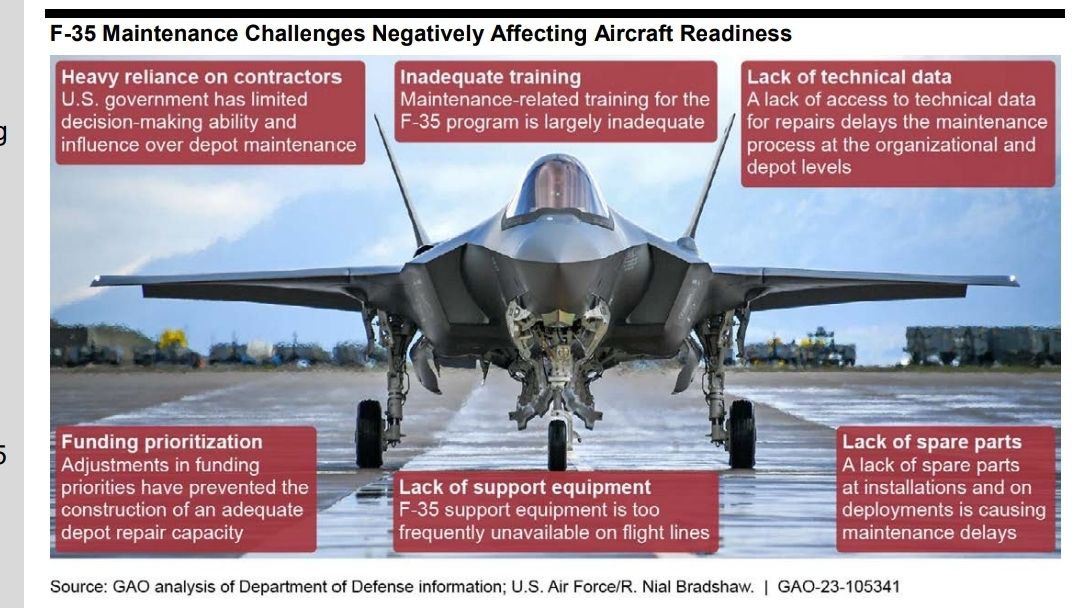
I don’t see where you’re getting that 85% number. Appendix III of the PDF has the data. The numbers don’t look good to me (I don’t know what would be considered a “normal” capability rate for military aircraft) but they’re generally much higher than “15% capable”, especially the newer subset of aircraft.
What’s more disturbing to me from the PDF is “DOD plans to procure nearly 2,500 F-35s at an estimated life cycle cost of the program exceeding $1.7 trillion. Of this amount, $1.3 trillion are associated with operating and sustaining the aircraft.” Those are our taxes (plus vast sums of supposedly “unsustainable” debt), being funneled into the pockets of the MIC and ultimately into the pockets of the wealthy elite, rather than being spent on critical domestic social needs (Medicare/Medicaid/Social Security for ex.) or just being left with the taxpayer.
oh sorry misread it, it’s only 50%
It’s likely he pulled it out of his ass, much like a lot of the headlines he throws up.
The mission-capable rate is 55 percent, but that definition is for a single-task mission. Considering the F-35 is meant to have multiple missions, the report is a bit damning on the supply issue. However, the report is meant to highlight the issues so that the military can take over supply and maintenance in 2027. And a lot of the issues are lack of supply and depots for maintenance.
The $1.7 trillion is an estimated cost over the lifecycle of the entire F-35 fleet of 2500 planes. The F-22 first flew in 1990 and entered service in 2005. So 20-30 years would be a decent lifecycle. The math for the F-35, using 20 year lifecycle, comes out to about $65 billion/yr for 2500 planes or $26 million/yr per plane. Part of the report is also providing recommendations on lowering maintenance costs.
It’s still a lot of money, but when we’re talking decades, we need to put that into perspective when healthcare spending in the US is $4.5 trillion per year.
that’s a whole lot of copium you got there
Bro hasn’t made a single mistake in his life what a legend
Melt them down




